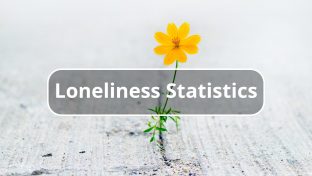Exploring The Human Condition Of Loneliness

In our research, we’ve found over 100 distinct types of loneliness.
From someone dealing with a tragic loss or a recent divorce, to a sudden change in life circumstances like moving to a new city or experiencing the COVID-19 pandemic, it’s important to know that just about everyone will contend with feelings of loneliness from time to time.
- While there is no official consensus, according to most psychological research, there are a few broad categories of loneliness based on their root causes, which include situational loneliness, developmental loneliness, and internal loneliness.
- It’s also important to note that there are key distinctions between loneliness, solitude, and social isolation.
- While it has been called an epidemic in recent years and nearly half of Americans experience loneliness, it certainly isn’t a struggle that is unique to our country or culture — far from it, as the statistics on loneliness show.
Struggling with loneliness or having a mental health crisis?
- Suicide Prevention Lifeline: 1-800-273-TALK (8255); Deaf or hard of hearing dial 711 before the number or connect via online chat
Britons struggle with loneliness; as do those living in Canada; in Australia; and the list goes on and on.
Feeling lonely is not abnormal, unusual, or (necessarily) bad — in fact, loneliness can sometimes be a good thing.
Loneliness often acts as an “alert” to let a person know that something is off, much in the same way that a car might send a warning signal when it needs an oil change.
In this article, we’re going to explore everything there is to know about loneliness: types, root causes, signs and symptoms, health risks, treatments, and coping strategies.
Loneliness At A Glance [Infographic]
For a quick yet comprehensive visual exploration of loneliness — the three main categories, whether they are transient or chronic, and statistics on loneliness — we created an infographic that summarizes our findings.
Click on the image to enlarge, and please include attribution to The Roots Of Loneliness Project if you use this graphic.
Share This Image On Your Site

The Three Main Types Of Loneliness
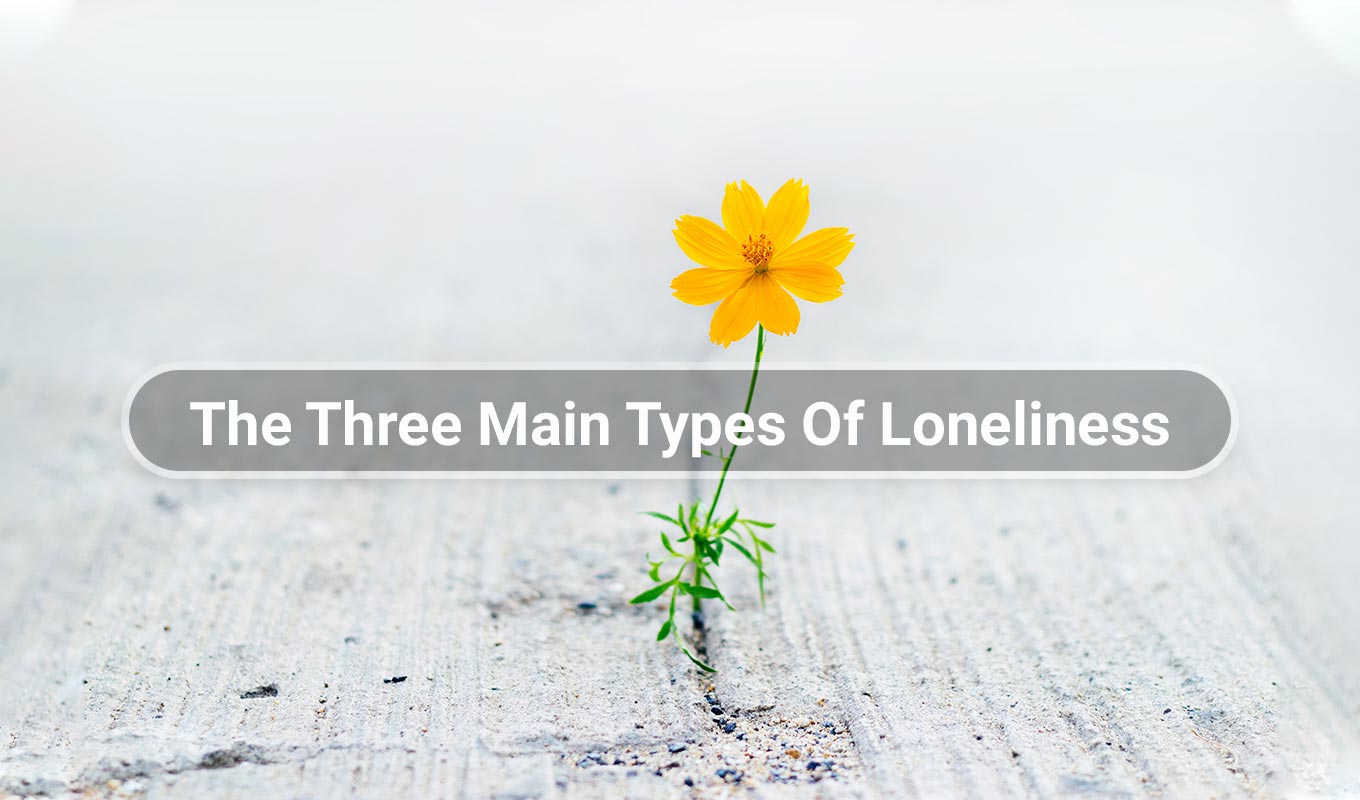
Before we take a deeper dive into how loneliness is defined or get into the statistics, it’s important to first understand the 3 broad categories of loneliness and whether the loneliness you’re experiencing is transient or chronic, and why.
- While there is no official consensus, according to most psychological research, there are a few broad, generally accepted categories of loneliness based on their root causes.
- These include situational loneliness, developmental loneliness, and internal loneliness.
- All of the over 100 types of loneliness we’ve found fall within one or more of these broad categories.
Situational Loneliness
- Situational loneliness is a type of loneliness that comes about from changes that occur during a person’s life.
- These can include anything from cross-country relocation to job changes, the loss of a loved one, changes in physical ability or sudden disability, relationship status changes, working remotely from home, and even the loss of social support.
- Situational loneliness can be short-lived as people adapt and adjust to the things that life throws at them, but it can also become a long-term problem with long-term health consequences.
- Research has shown that left untreated or aided, extended loneliness can change the structure and processes of the brain.
- To read more about situational loneliness, click here.
Developmental Loneliness
- Developmental loneliness is a type of loneliness that can emerge when we don’t feel like we’re developing at the same rate as those around us.
- Everyone grows and develops at their own rate, but it can be a challenge to make social and/or intimate connections with others when we feel like we’re falling behind them.
- For instance, if you’re single but all of your friends are getting married and having children, you might feel lonely because you perceive yourself to be “behind” them in your growth as an adult.
- Feelings of inadequacy are associated with developmental loneliness because a person may feel “less than” when comparing themselves to their peers.
- To read more about developmental loneliness, click here.
Internal Loneliness
- Internal loneliness is a type of loneliness that originates from within.
- Internal loneliness is deeply personal and may be rooted in one’s personality and inability to make meaningful connections with others.
- They may or may not be physically alone, but even if they have friends and a social circle, they still feel alone.
- Those who suffer from low self-esteem and self-worth are more likely to contend with internal loneliness.
- Further, internal loneliness may be brought on due to a person’s mental distress, overwhelming feelings of worthlessness or guilt, feeling out of control in situations, or having inadequate coping strategies.
- To read more about internal loneliness, click here.
The Difference Between Transient And Chronic Loneliness
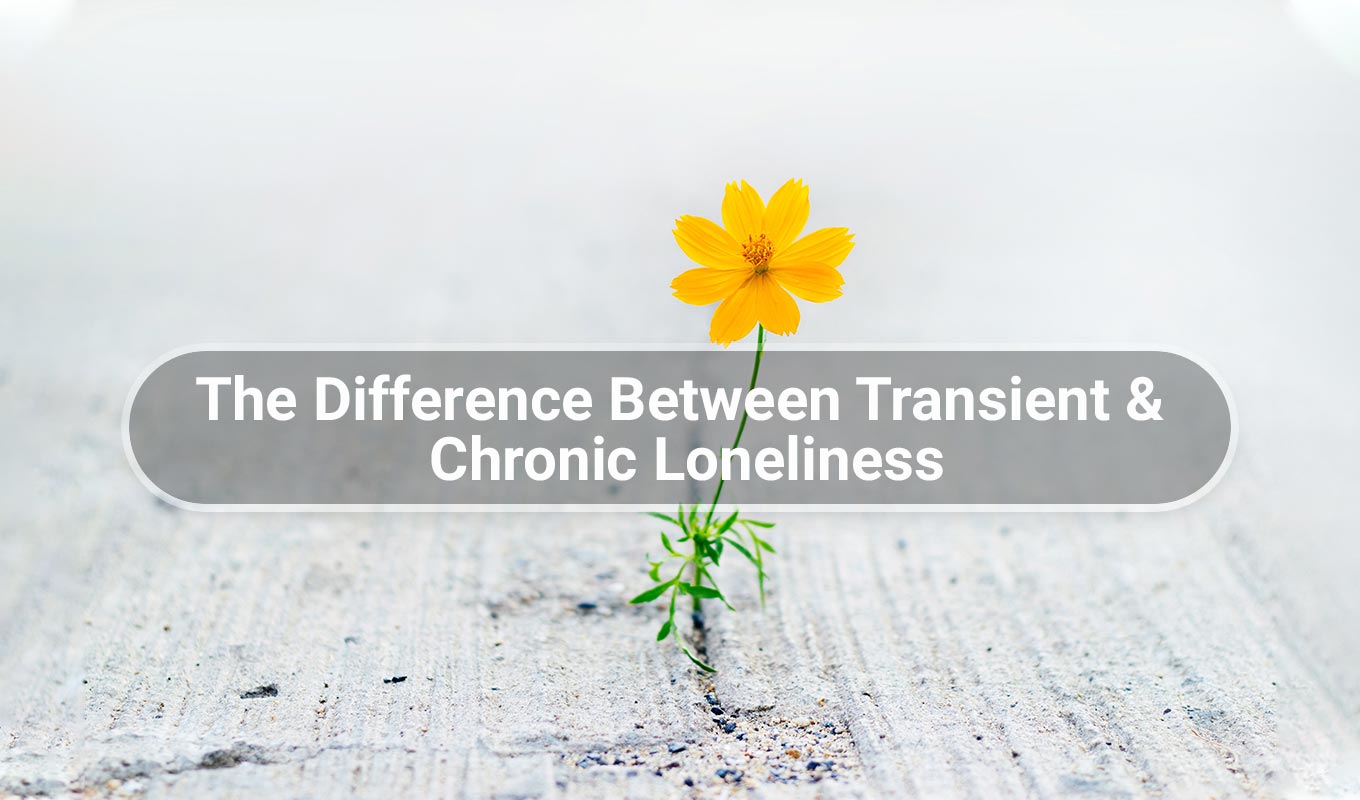
Loneliness can be considered transient or chronic.
Although they manifest in different ways, it’s important to understand which type of loneliness you might be experiencing so you can take the necessary steps to deal with it effectively.
Transient Loneliness
- Transient loneliness, also known as “state loneliness,” is a temporary type of loneliness that generally occurs because of a change in circumstance or situation.
- For example, one might relocate to another city or begin a new job at a different office. The initial adjustment period may bring about some feelings of loneliness (situational), but it’s a temporary (transient) situation until that person adapts to their new environment.
- Because transient/state loneliness is temporary, it can motivate a person to reestablish existing social connections or create new ones to fill the void.
- This is an example of how loneliness can be a “good” thing and serve a purpose of growth, change, and acceptance.
- However, when loneliness is no longer temporary or a person struggles to pull out of a repeating cycle of loneliness (see Pathological Loneliness), it can become chronic.
- To read more about transient loneliness, click here.
Chronic Loneliness
- Chronic loneliness is marked by a long-term inability to make connections with other people, feeling isolated and alone (even if you are not physically alone), having no close friends, low self-esteem, and exhaustion.
- Also known as “trait loneliness,” chronic loneliness can initially emerge as a result of many different things, including the death of a spouse, family member, or loved one, divorce, relocation, or any other change in a person’s circumstances.
- Because of a person’s inherent traits, they may struggle with loneliness more than those who don’t have traits that make them susceptible to feeling alone.
- In that way, someone’s personality can actually increase their risk of becoming lonely in general, and their personalities can become shaped by their loneliness in a cycle that just keeps repeating.
- Unfortunately, research has shown that chronic loneliness is indeed an inheritable trait that can be passed down.
- To read more about chronic loneliness, click here.
Understanding And Coping With Loneliness
For so many people, feelings of loneliness are normal — even if they can’t pinpoint a precise reason or cause.
Despite its normalcy, loneliness still has a profound, and often negative, impact on people’s daily lives.
In this section, we’ll talk about:
Loneliness As A Human Condition
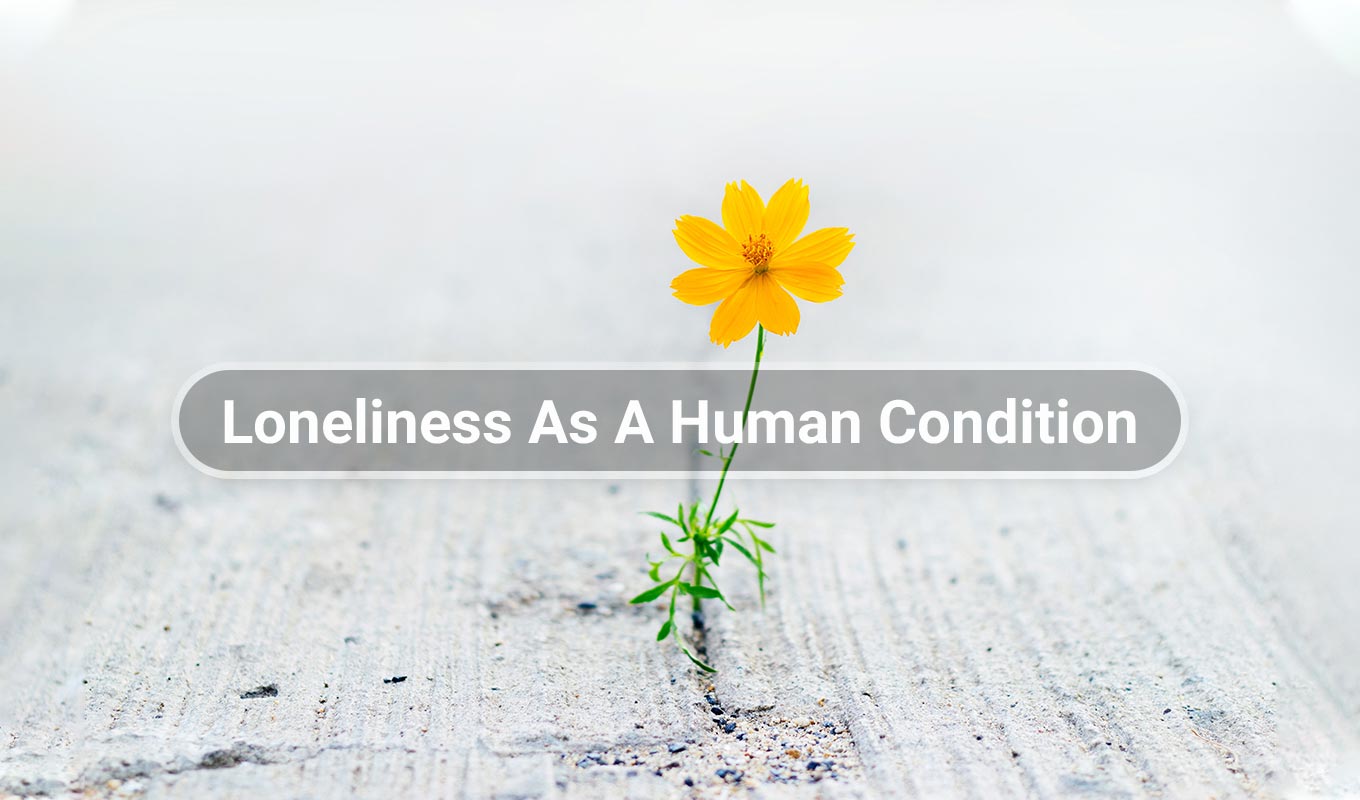
Nearly everyone has experienced loneliness at some point in their lives — or will — and some of us experience loneliness more often than others.
At its core, loneliness is part of the human condition, yet many people struggle to define it — or recognize it.
In this section, we’ll talk about:
- What Is Loneliness
- Loneliness Statistics
- Being Alone Vs. Lonely
- Isolation Vs. Loneliness
- Solitude Vs. Loneliness
What Is Loneliness?
Dr. Julianne Holt-Lunstad, professor of psychology and neuroscience at Brigham Young University, spoke to The Roots Of Loneliness Project during an exclusive interview.
She explained that everyone’s definition of loneliness might vary a bit, saying:
“Loneliness is really the subjective feeling of being alone. It’s often described as a distressing feeling, but quite often, it’s defined as the discrepancy between one’s actual level of social connection and one’s desired level of social connection.”
In essence, loneliness is the feeling of being disconnected from others in some manner.
Can Loneliness Be A Good Thing?
Loneliness can sometimes be beneficial to a person — alerting them when they’re in need of connection and interaction with others.
“Being socially connected is thought of as a fundamental biological need, and so it’s argued that loneliness is really this subjective state or a biological motive,” Dr. Holt-Lunstad explained.
“Much like hunger or thirst motivates us to seek out food or water — that loneliness motivates us to reconnect socially.”
In this way, loneliness can serve as a catalyst in those suffering from it, leading them to seek the human connection they’re lacking.
How Prevalent Is Loneliness (Statistics)?
It may seem like everyone else is happy and rarely lonely, but statistics about loneliness tell another story.
Loneliness is incredibly common, with studies suggesting that 80% of those under 18 and 40% of people over 65 are lonely at least sometimes.
Our own survey showed that loneliness skyrocketed among all demographics during COVID-19, increasing overall by 181% across the board.
There are generational differences in loneliness, too, with Millennials being considered “the loneliest generation” by many. Recent research from YouGov found that 30% of Millennials say that they are “always or often” lonely.
As a whole, loneliness is an incredibly common experience among people worldwide, regardless of age or personal circumstance, which is why it’s so important that we start talking about it openly.
Being Alone Vs. Lonely
Though the two are often used synonymously, being alone is not the same as being lonely.
- Being alone means that a person is physically by themselves, which can be a completely voluntary status. Someone who is alone might be perfectly content to spend time on their own without feeling lonely in the process.
- Loneliness, however, refers to the desire for more social connection and human interaction than a person has, which may be rooted in involuntary circumstances. If you are alone and wish you weren’t or you’re feeling disconnected from others, then you are lonely.
Isolation Vs. Loneliness
Feeling isolated and feeling lonely are very similar, but there are differences between the two experiences.
- Isolation typically refers to the physical state of being alone, often used in the context of a person having limited social interaction. This may be due to living in a remote location or not having adequate means to go out into the world to be with others regularly. Isolation does not necessarily mean that a person will feel lonely. However, if their isolation causes them to desire more social interaction than they receive, loneliness may result.
- Loneliness can occur whether someone is in a crowded room or isolated by themselves. Feelings of loneliness can arise when a person doesn’t have the amount of meaningful connection or interaction with others that they desire, regardless of the number of people nearby. Involuntary circumstances such as social anxiety or disability may lead to isolation; in this case, loneliness can result when a person doesn’t have the connection and interaction they’re longing for.
Solitude Vs. Loneliness
Like isolation or being alone, solitude also differs from loneliness in a similar way.
- Solitude, while it is also a state of being alone, is a voluntary circumstance that has a neutral, if not positive, effect on a person. Being in solitude isn’t inherently negative; someone in solitude may be happily resting or meditating instead of feeling disconnected from others.
- Loneliness, as we’ve established, is typically associated with longing for more connection and interaction than a person currently has. This may be due to involuntary circumstances or it can result from social anxiety and other challenges that make it difficult for a person to make meaningful connections with others.
The Signs And Symptoms Of Loneliness
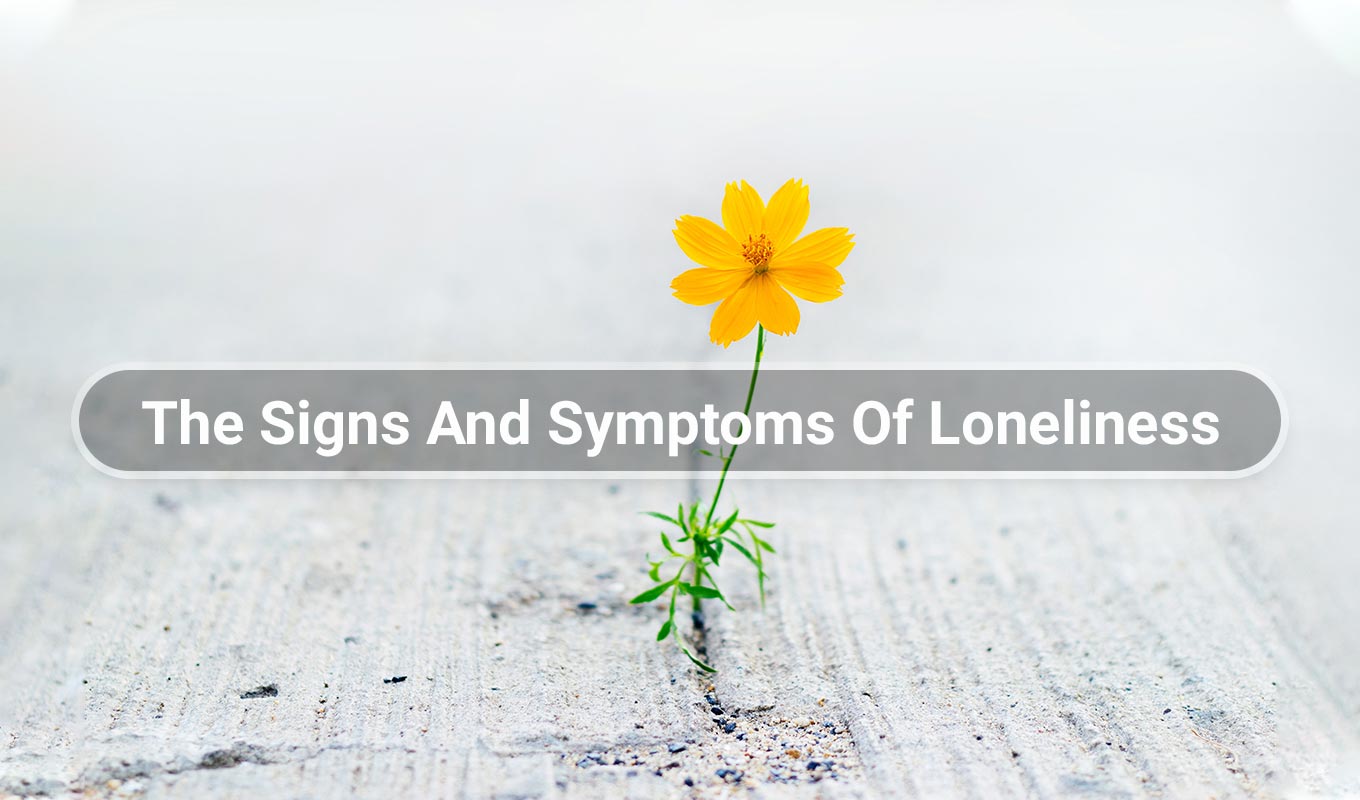
Loneliness can present differently in everyone.
However, it’s important to be aware of the signs and symptoms of loneliness so you can recognize if you are lonely — or not.
Common signs of loneliness can include:
- Isolation from others, including family, friends, and loved ones
- A sense of disinterest in daily activities, including activities that are usually enjoyable
- A low sense of self-worth or self-esteem
- Tiredness or exhaustion despite ample sleep
- Feeling disconnected even when surrounded by other people
- Becoming irritated or angry at minor issues or lashing out at others
- Partaking in risky activities
- Sleeping too much or too little
- Exaggerated feelings about existing relationships
- Appetite changes
- A general sense of “unwellness” even when things seem to be going well
Additionally, loneliness can distort the way we perceive our own relationships with others.
Since signs of loneliness can vary so much from person to person, it’s particularly important for a person to be aware of how loneliness personally impacts them.
It’s also important to recognize when loneliness becomes something more serious — and when it’s time to reach out for help.
If the loneliness doesn’t go away with time or after making an effort to improve things, or if it seems to get worse, it might be time to seek help.
Causes Of Loneliness
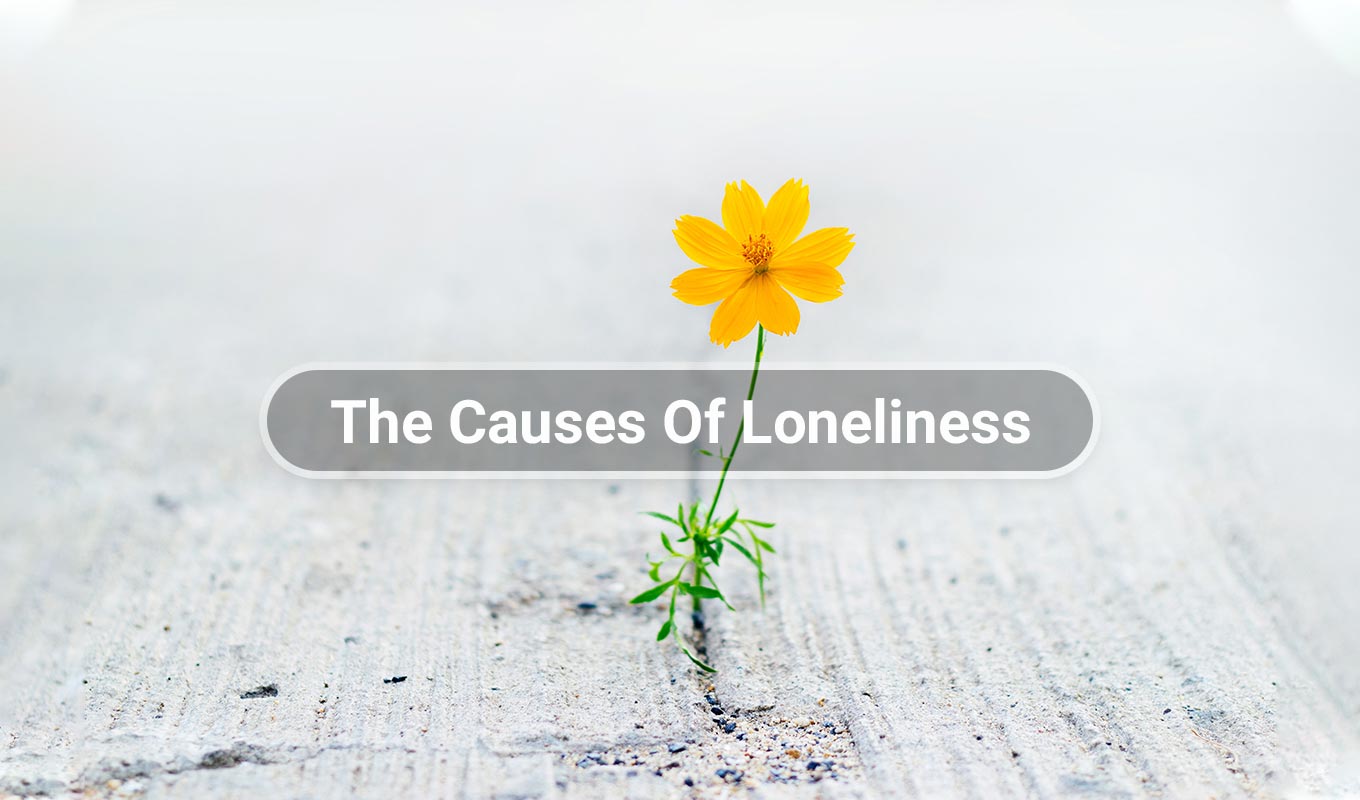
What triggers loneliness for one person might not trigger loneliness for another. However, certain circumstances are more likely to cause loneliness than others.
Causes of loneliness include:
- Major life changes, such as moving to a new city, settling into retirement, or getting divorced
- Acquiring or managing an existing chronic illness or disability
- Experiencing a social, intellectual, developmental, or emotional disconnect with others
- The aging process, including being a teenager or senior citizen
- Experiencing social rejection by others for being “too pretty”
- Facing the end of your life
- Having inadequate social bonds or relationships
- Situational circumstances relating to your employment
- Being in a codependent relationship
- Having limited social contact with others or perceived social isolation
- Having a spiritual awakening
- Questioning religious beliefs or not feeling connected to your religious faith
- Grief or miscarriage
- Social anxiety
- Being on the autism spectrum
- Depression
- Mental illness, including borderline personality disorder
- Being single
- Going through pregnancy alone
- Becoming a mother or being a working mom
- Living in a sexless marriage or lacking sexual connection with someone
- Being childfree and alone
- Self-sabotaging your relationships
- Lacking connection in a marriage
- Experiencing frequent discrimination, prejudice, or oppression due to one’s race, gender, socioeconomic status, sexual orientation, etc.
- Dealing with a pandemic like COVID-19 and its effects — including living in quarantine
- Transitioning into a new stage of life (going to college, graduating, or moving away from family)
- Feeling lost about what to do with one’s life, especially when it seems like others don’t share that struggle
- The holidays, including Thanksgiving, Christmas, and New Year’s
- Frequent use of social media, which can cause one to make comparisons to others
- Seeing another person experience loneliness, according to studies, can also trigger loneliness
Any major life change can cause loneliness — that’s a part of human nature — but a lack of connection in daily life can also spur feelings of loneliness.
Experiencing loneliness long-term for any reason can lead to chronic loneliness.
A person struggling with loneliness should consider taking inventory of their overall state of being to evaluate aspects of their life that may be contributing to their feelings of disconnection with others, including burnout from work, a lack of sleep, a recent move, the end of a relationship, or other life-altering circumstances.
Whatever the cause, you should allow loneliness to act as a point of data that can be used to identify potential changes you can make to improve your happiness and quality of life.
The Health Risks Associated With Loneliness
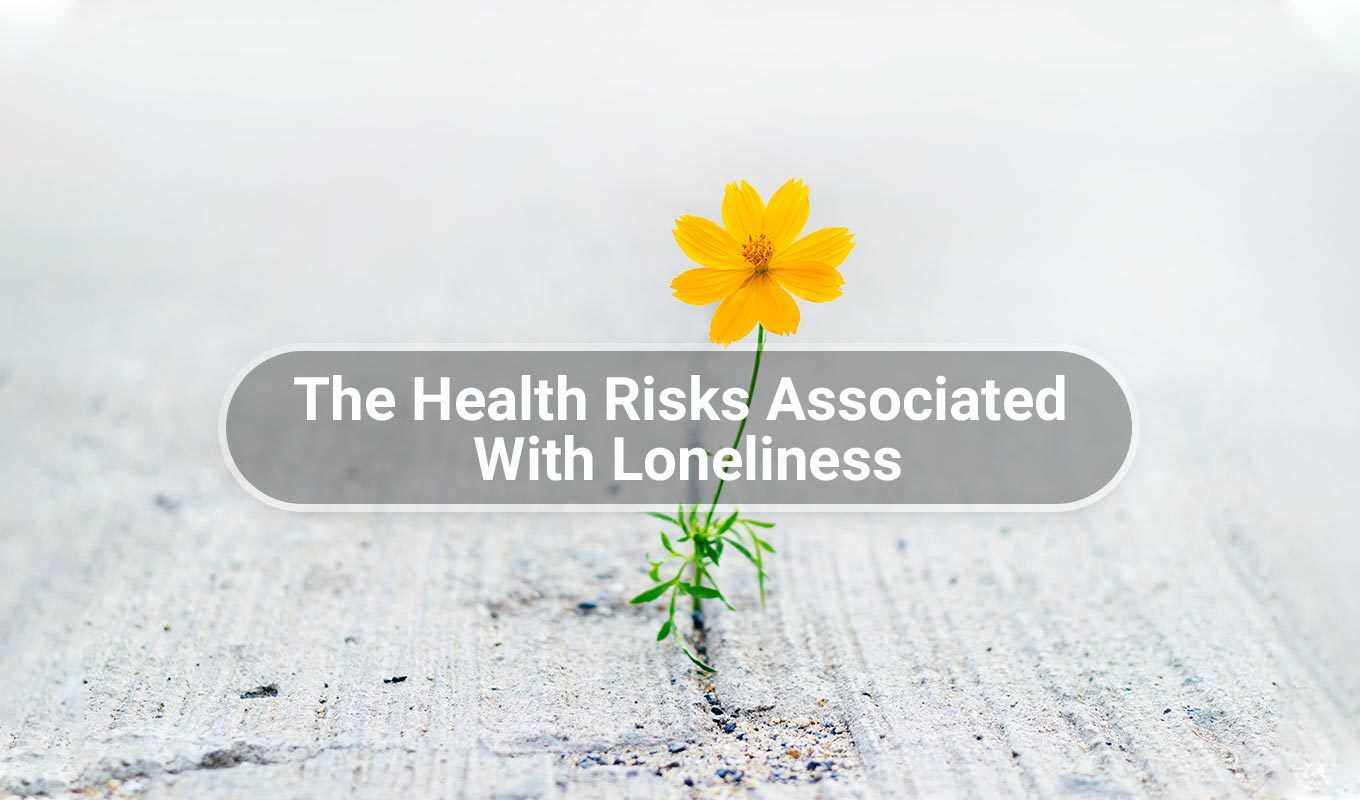
Many scientists have suggested that loneliness is a public health issue that needs to be taken seriously due to its impact on well-being.
Though short-term loneliness can cause health problems, it’s chronic loneliness that worries most scientists and researchers in terms of health risk.
In this section, we’ll talk about:
How Can Chronic Loneliness Lead To Health Problems?
Physically, chronic loneliness can have a profound effect on your body, potentially leading to:
- A weakened immune system
- Heart disease
- High blood pressure
- Stroke
- Type 2 diabetes
- Sleep disturbances
- Worsening of multimorbidities and co-morbidities
- Physical harm caused by eating disorders
Additionally, loneliness increases one’s risk for early mortality and can be as damaging as smoking 15 cigarettes per day.
One study found that chronically lonely older adults with heart failure were up to four times more likely to die than their counterparts.
This isn’t surprising when we consider the ways loneliness can make a person feel.
What Does Chronic Loneliness Do To The Brain?
Chronic loneliness can change a person’s brain, making it incredibly important to be aware of loneliness, its causes, and ways in which it can be eased.
Chronic loneliness can have some particularly harmful mental health risks that include:
- A greater risk of mental illnesses, such as depression and anxiety
- Cognitive impairment and decline
- Dementia, Alzheimer’s, and similar conditions
- Stress, which can rewire the brain and its structure
- Drug abuse or alcohol addiction
- Disordered eating
- Emotional distress and exhaustion
Though scientists and researchers are still learning more about loneliness, the way it affects us and our cognitive abilities, loneliness can certainly be harmful to our brains.
Who Is Most At Risk For Experiencing Chronic Loneliness?
Loneliness is a widespread human condition that can happen to anyone.
However, some individuals are at greater risk.
Those most at risk for developing chronic loneliness include:
- The elderly
- People of color
- Those on the autism spectrum
- Queer people
- Those who live alone
- Others in marginalized or overlooked communities
- Introverted people
- Social anxiety sufferers
- Those with depression
- Those struggling with their mental health
- Those struggling with disabilities or chronic health problems, including cancer
- People who abuse drugs or alcohol
Surprisingly, spending time with someone who is lonely is a risk factor that could actually make those that spend time with them lonely, too. Loneliness, in fact, has been found to be contagious.
How To Deal And Cope With Loneliness
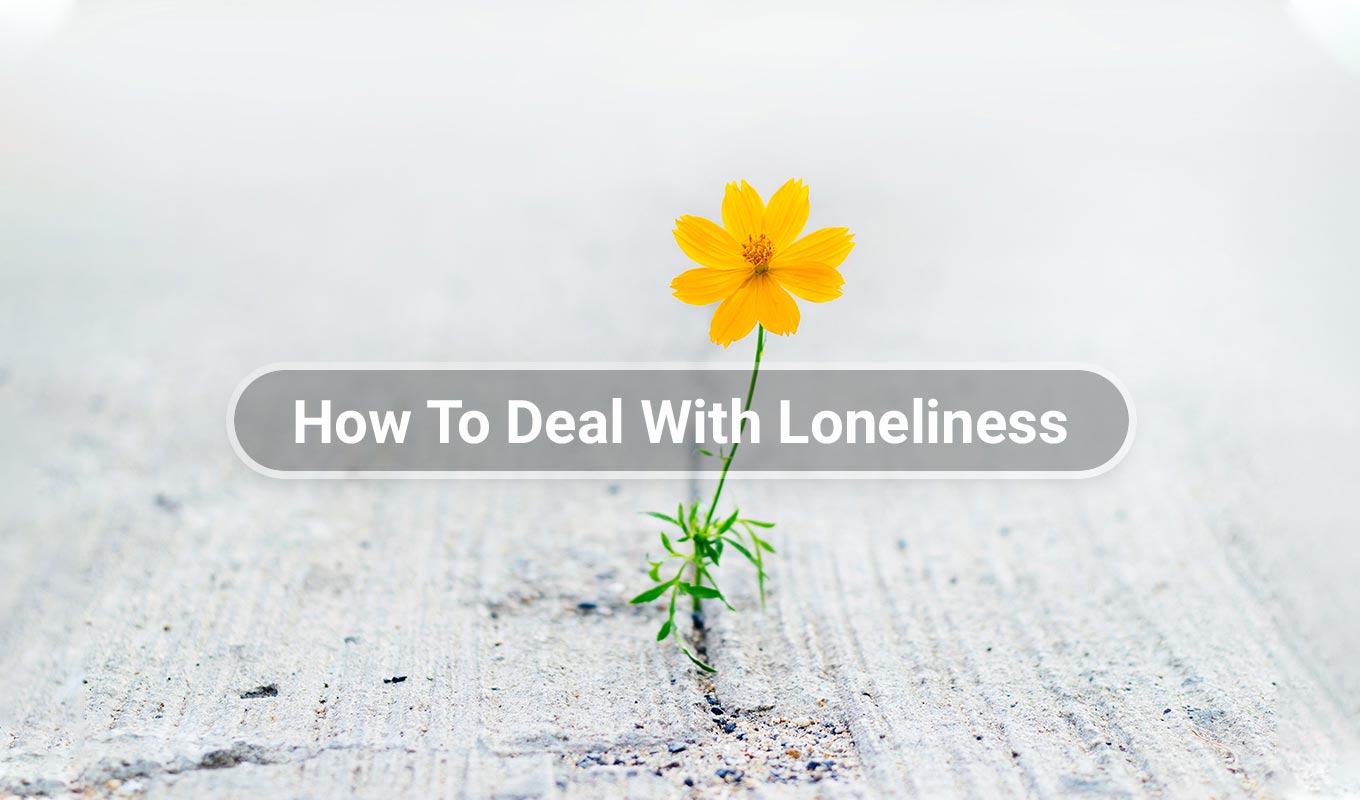
There’s no one right way for a person to manage their loneliness.
There are options when it comes to dealing with loneliness, however, and it’s important to figure out what works best in each individual circumstance.
In this section, we’ll talk about:
- What To Do When Lonely
- Tips For Coping
- How To Stay Connected
- Why Alone Time Matters
- How To Help Others
What Can You Do If You’re Experiencing Loneliness?
So, what can you do when you’re lonely?
As we mentioned earlier, loneliness can be a good thing — because it acts as a catalyst for making positive changes that will benefit your life overall.
There are several things a person should do if they consider themselves to be lonely:
- Ask yourself why you might be lonely in order to find the root of the problem
- Understand the effect loneliness is having on your quality of life
- Recognize that loneliness is a sign that something needs to change for the better
- Talk to a therapist or someone that can be trusted to have your best interests at heart
- Spend time cultivating relationships with others in whatever form best meets your needs
- Distract yourself by doing something you enjoy
- Consider volunteering or getting involved in community service to spend time with others
- Seek a support group, whether in-person or online, particularly if loneliness is the result of situational circumstances like grief, divorce, or cancer
- Remember that everyone deserves the best in life and that includes the relationships they have — loneliness is not a reflection of you as a person
What Are Some Tips For Dealing With Chronic Loneliness?
Though chronic loneliness is quite common, how people cope varies dramatically.
There are a variety of ways to manage feelings of loneliness, including:
- Volunteering with an organization that is meaningful to you
- Talking with friends and family about your experiences
- Exploring interests or activities that are new to you
- Trying to get enough sleep
- Eating well
- Exercising
- Spending time on a hobby you love
- Finding new ways or places to interact with others and meet new people
- Improving relationships with friends and loved ones
- Finding a support group
- Reaching out to a therapist or counselor
Studies have shown that therapy is often an effective way to treat loneliness; therapy can help a person identify the cause of their loneliness and find solutions, and also helps them to challenge negative thoughts that may increase loneliness.
Depending on a person’s location and circumstances, the cost of therapy can vary. Certain therapists are often covered by insurance companies, but many offer a sliding scale payment option for those without insurance.
Colleges often also provide access to therapists for their students at no cost.
How Can A Person Stay Connected To Friends And Family?
Staying close with loved ones is vital, especially for those who are feeling lonely and longing for connection.
People can schedule meetups, have phone calls or online chat sessions, write letters to one another, and send care packages to each other to stay in contact and connect meaningfully.
A person doesn’t have to send something large or expensive — even a postcard can tighten the bond with friends and family.
How Important Is Alone Time For Mental Health?
Though you want to avoid loneliness when possible, spending time with oneself is important, too — studies have found that many people can problem-solve more effectively when alone.
Additionally, being alone allows a person to rest and relax. Taking time to let one’s mind wander has been shown to improve mental health — and is essential for human development.
What Can You Do To Help Others Struggling With Loneliness?
If someone you love is experiencing loneliness, know that you can help them cope.
You can make someone who’s lonely feel less alone by:
- Talking to your loved one about your own experiences with loneliness and assure them that they are, in fact, not alone
- Checking in on them without being prompted and on normal days (ie: not only on birthdays, holidays, etc.)
- Encouraging them to partake in enjoyable activities
- Spending time with your loved ones when possible, either in person or virtually
- Suggesting that they reach out to experts, such as therapists, if needed
- Just listening
Closing Thoughts
If you’re lonely, it’s not because you are broken — to be lonely is to be human.
However, it’s important to be aware of why we feel lonely, as well as how loneliness can affect us.
Once we know why we experience loneliness, we can begin to cope with our feelings — and we can help others cope with their loneliness, too.
Loneliness is part of being human, and though it’s often painful, talking about it allows us to connect with others and reminds us that we’re not so alone after all.
Editor’s Note: This article is part of The Roots Of Loneliness Project, the first-of-its-kind resource that comprehensively explores the phenomenon of loneliness and over 100 types we might experience during our lives.
Find Help Now
If you’re struggling with loneliness, we’ve put together resources to meet you wherever you are — whether you want someone to talk to right now, or are looking for longer-term ways to help ease your loneliness.
- Suicide Prevention Lifeline: 1-800-273-TALK (8255); Deaf or hard of hearing dial 711 before the number or connect via online chat
- Resources & Emotional Support For Loneliness
- Volunteer & Pet Adoption Opportunities





